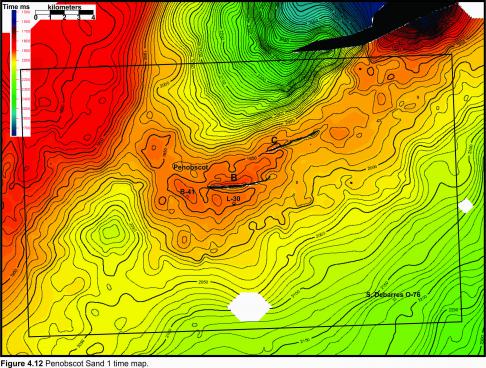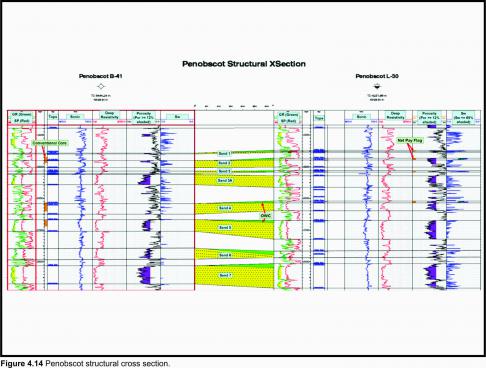The Penobscot reservoir sands are located below the 'O' limestone marker in the early Cretaceous Missisauga Formation. Penobscot L-30 encountered seven hydrocarbon bearing moderate to well sorted, fine to coarse grained reservoir sands. The interpreted environment of deposition for these reservoirs varies from distributary channel to shoreface. The sands vary in thickness from a few metres to over 70 m and can be correlated, with varying degrees of confidence, between Penobscot L-30 and Penobscot B-41, located 3.2 km to the west. The thicker shoreface sands can generally be correlated with higher confidence and are interpreted to have the greatest lateral continuity (Figure 4.14).
The Penobscot field can be subdivided into two parts. The L-30 well region south of the main Penobscot fault which recovered oil and gas from several zones via RFT, and two separate untested closures located to the north and northeast (Figure 4.12). The reservoirs encountered in the southern region are interpreted to be trapped in a 4-way dip closure created on the downthrown side of a down-to-the-basin growth fault. The northern closure is on the upthrown side of the main Penobscot fault and is primarily fault dependent. The northeastern structure requires closure against a different fault. Top seal is provided by the overlying marine shales.
The Verrill Canyon shales are believed to be the source rock for the Penobscot structure. The main fault system exhibits evidence of early movement within the Jurassic period. This early movement may have created a conduit for the migration of generated hydrocarbon fluids into the system.



